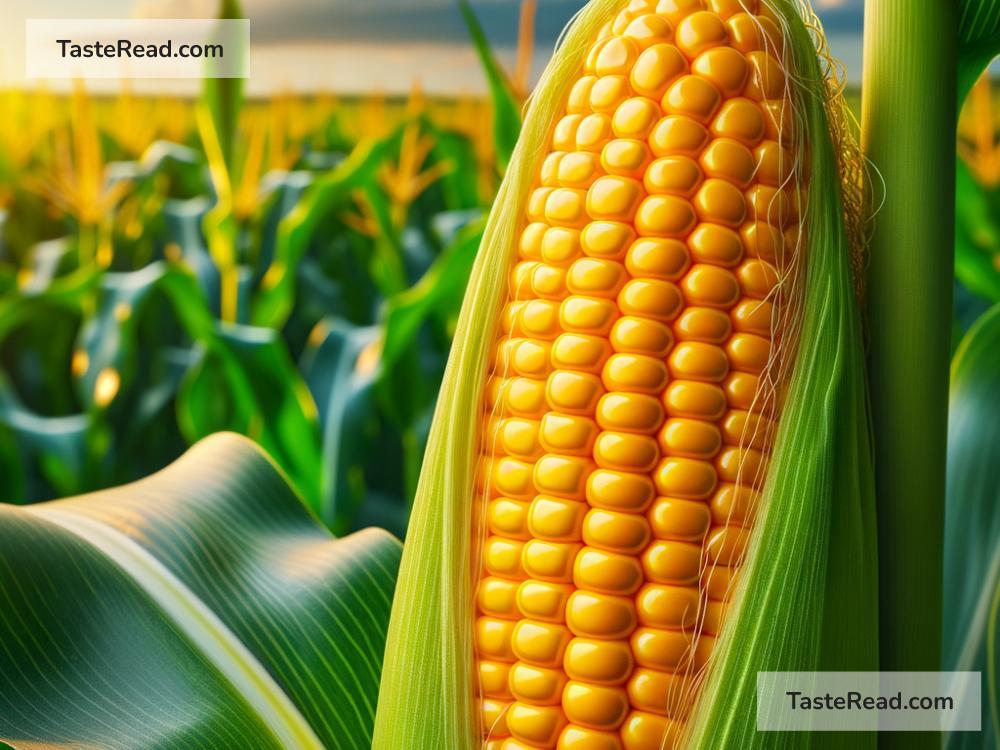Why Corn Kernels Are Arranged in Even Rows
If you’ve ever taken a closer look at an ear of corn, you may have noticed something fascinating: the kernels on the cob always seem neatly arranged in even rows. Whether you’re enjoying sweet summer corn at a barbecue or shucking it at home, this strange pattern is hard to miss. But why does this happen? What makes corn kernels line up so evenly instead of forming random clusters?
Let’s explore this intriguing phenomenon in simple terms!
A Look Inside Corn: How Kernels Develop
To understand why corn kernels are organized in even rows, we need to take a closer look at how corn grows. Corn, also called maize, is a plant with a cob (the central stalk) where the kernels develop. These kernels are the seeds of the plant, and they grow as part of its reproductive process.
Inside the cob, a structure called an “ovary” exists in neat rows. Each ovary can potentially become a kernel if it gets fertilized. Fertilization happens when pollen from the tassel at the top of the corn plant reaches the silk strands protruding from the cob. When the pollen lands on the silk, it travels down to fertilize the ovary, and a kernel begins to form.
Here’s the key idea: corn’s ovaries are arranged in neat, even rows before pollination even starts. This layout is pre-determined by the plant’s genetic instructions. So, the even rows of kernels we see are the result of how corn naturally grows from the very beginning.
The Science of Corn Rows: Genetics at Play
One of the main reasons why corn kernels follow an orderly pattern lies in the plant’s genetics. Corn is what scientists call a “monocotyledon,” which is a type of plant that grows with a specific symmetry. Its genes dictate that the cob’s ovaries must grow in straight rows.
Think of it like building blocks. Corn’s genetic blueprint ensures that these building blocks are placed in an organized grid, which eventually results in evenly spaced rows of kernels. This design is not random—it’s how the plant has evolved over thousands of years to efficiently grow and reproduce.
Why Are the Rows Always Even?
Okay, so we know that the kernels grow in rows, but why are there always an even number of rows? This is due to the way corn develops.
Corn cobs begin forming with multiple cells, and as these cells divide and multiply, the number of rows can only increase in pairs. This process, called “meristematic growth,” happens symmetrically along the cob, meaning the rows expand in an even-number pattern. For example, a cob might start with four rows, then grow to eight, then 16, and so on.
In short, the biology of corn makes it impossible for rows to form unevenly. If you count the rows on any corn cob—from supermarket staples to heirloom varieties—you’ll always find that the number is even.
A Practical Reason: Efficiency
The even rows of kernels serve a practical purpose for the corn plant. By growing its seeds (kernels) in an orderly way, the plant can maximize how much it produces on each cob. The symmetry ensures all available space is used efficiently, with minimal gaps or wasted areas.
This organized growth also helps farmers and food producers get the best yield from each plant. After all, the more kernels a cob has, the better harvest farmers can achieve.
Humans and Corn: Selective Breeding
Interestingly, humans have played a big role in ensuring corn cobs look the way they do today. Thousands of years ago, early farmers in Central America discovered wild corn plants and began growing them as crops. Over generations, they selectively bred plants that produced more kernels and better yields.
This process refined corn’s genetics and led to the modern versions we eat today. The even rows and large number of kernels on today’s corn cobs are partly the result of humans choosing plants with the most desirable traits.
Why It Matters
The even rows on a corn cob are more than just a fun fact—they’re a sign of nature’s remarkable design. Corn’s symmetry not only ensures efficient growth, but it also tells a story of evolution, careful genetics, and human innovation.
Whether you’re shucking corn in your kitchen or biting into fresh sweet corn at a picnic, you’re witnessing a wonder of biology. The next time you hold an ear of corn, take a moment to appreciate its perfect rows and marvel at how nature got it so right.
So, there you have it! Corn kernels are arranged in even rows due to genetics, biology, and thoughtful human influence over centuries. What seems like a simple summer treat has a fascinating backstory rooted in science, evolution, and agriculture. Isn’t it amazing how even the smallest details in nature can reveal such big ideas?


